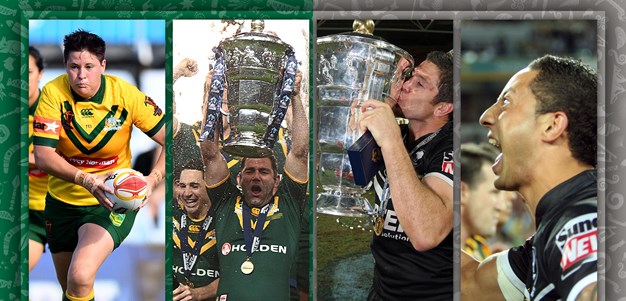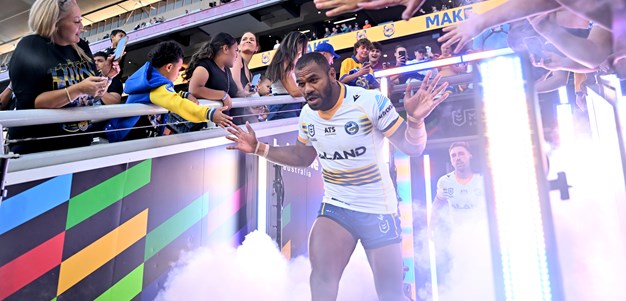The dawn of a new Toyota NRL Dream Team season is almost upon us, with a competition that's bigger and better than ever.
A whopping $89,850 worth of prizes is up for grabs this time around, with prizes for weekly winners, club champions, the eliminator winner, and the overall champ (who gets a brand new Toyota FJ Cruiser, among other things), plus two brand new mini-games: Toyota All Stars Dream Team and Toyota Origin Dream Team.
You can even win cash just by setting up a league with 15 mates before Round 1 of the season kicks off. (Although for most Dream Teamers, beating your friends in head-to-head match-ups each week is reward enough.)
There have also been tweaks to the game itself, which I've covered in some detail here and here.
But for the newcomers to the best fantasy football game around, here I'll run through some of the general tactics to keep in mind when picking your initial squad. (Dream Team die-hards stay tuned, I'll have my say on this year's bargain buys in the weeks to come...)
1. The big guns
First things first. Toyota NRL Dream Team awards points to players for carrying out certain acts on the field, from tackles and tries to run metres, offloads, 40/20 kicks and tackle breaks. (Check out my full rundown on Dream Team scoring.) So your ideal Dream Team isn't necessarily the Australian Kangaroos lineup – it's the combination of players that will score you the most Dream Team points by the end of the season.
So players like Cameron Smith and Corey Parker – who make plenty of tackles, gain run metres and kick goals on a regular basis – are more valuable than backline superstars like Billy Slater and Greg Inglis. Even with the changes to Dream Team scoring this season, which rewards attacking plays more than ever before, the players who are most involved on the field for 80 minutes each week will still be Dream Team's top dogs.
Smith, Parker and Paul Gallen are the best examples of these players (and will be among the game's most expensive). Any busy forward who can stay on the park for the full 80 minutes each week will be a very handy Dream Team scorer. One or two of these big scorers will be vital in your Dream Team from the start of the season.
2. The playmakers
Dominant playmaking halves will be more important in 2012 than ever before. Guys like Johnathan Thurston, Daly Cherry-Evans and Jamie Soward have traditionally scored strongly with plenty of points from kick metres, but the increased value of try assists, tries and line breaks this season will give these playmakers more opportunities than ever.
Look for a half who is his club's go-to man; who will do the bulk of the kicking in general play and be the player most likely to set up his team's tries. James Maloney, Scott Prince and Terry Campese also fit the bill.
3. Utility men
Versatile players are more important than ever in 2012. For those new to DT, each player is designated to either one or two positions (the six Dream Team "positions" in 2012 are: fullback/winger; centre; half; second-row forward; front-row forward; and hooker).
Dual-position players are handy for two reasons. One, they may actually play in a strong scoring position (like hooker, half, or second-row forward) for their team, but can also be picked in another position in Dream Team. The most obvious example of this is a hard-working second-rower who you can pick in the centres, players like Ben Smith, Nathan Smith and Mitchell Aubusson. With these players in your squad, you can effectively pick four second-rowers in your starting lineup, rather than the allocated three.
The second benefit of DPPs (dual-position players) is that they will make life much more flexible when making trades. Say you want to trade out an under-performing centre, and you have Ben Smith in your squad as a second-rower. This year, you can select the centre you want to trade out, then replace him by moving Smith into the centres, then trade in a high-scoring second-rower to take Smith's place. It means you can effectively trade a centre for a second-rower. (If this feature still isn't clear, don't worry – you'll work it out when the game begins.)
This added versatility both helps you cover for missing players during the season, and could save you invaluable trades at the end of the year.
4. Squad depth
The temptation when you pick your initial squad will be to grab a bunch of your favourites, then fill out the rest of your 25 with bargain-basement cheapies. But beware, squad depth will be key in 2012.
Having 25 players who actually turn out for their teams every week will make life much easier. For one thing, you don't want to be forced to make a trade every time a player gets injured. You will also need to cover for byes this year – between rounds 10 and 18, at least two clubs will have a bye every week. Sure, some clubs will fare better than others (I'll have more on that in the weeks ahead), but as a rule it's good to have back-up options in reserve if some of your key players are out.
So when picking cheap players, at least aim to buy those who stand a good chance of getting game-time – particularly at the start of the season. At worst, these are the players who will rise in value during the year, meaning you can cash them in to boost your spending power later on.
That's it for now. Follow me on Facebook or Twitter for regular updates on news that could affect your Dream Team, and stay tuned to NRL.com for more hints and tips throughout the year.
And remember, Toyota NRL Dream Team (and All Stars Dream Team) opens on January 25.




